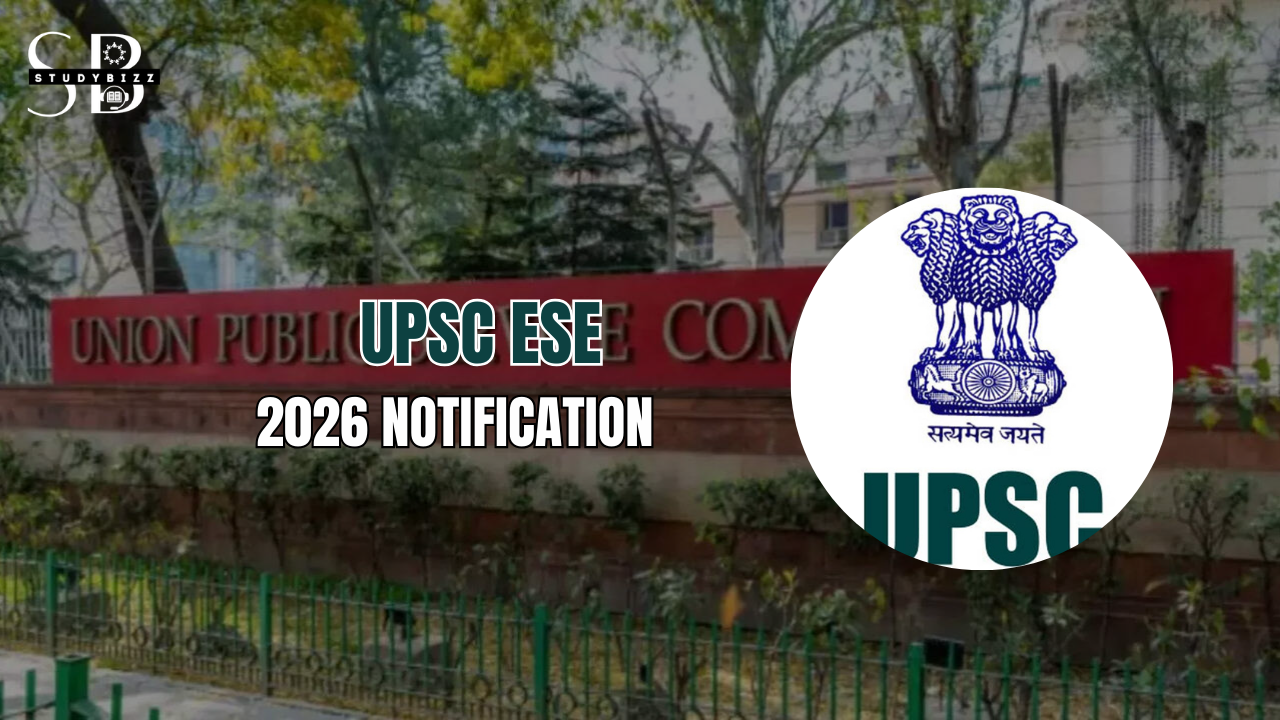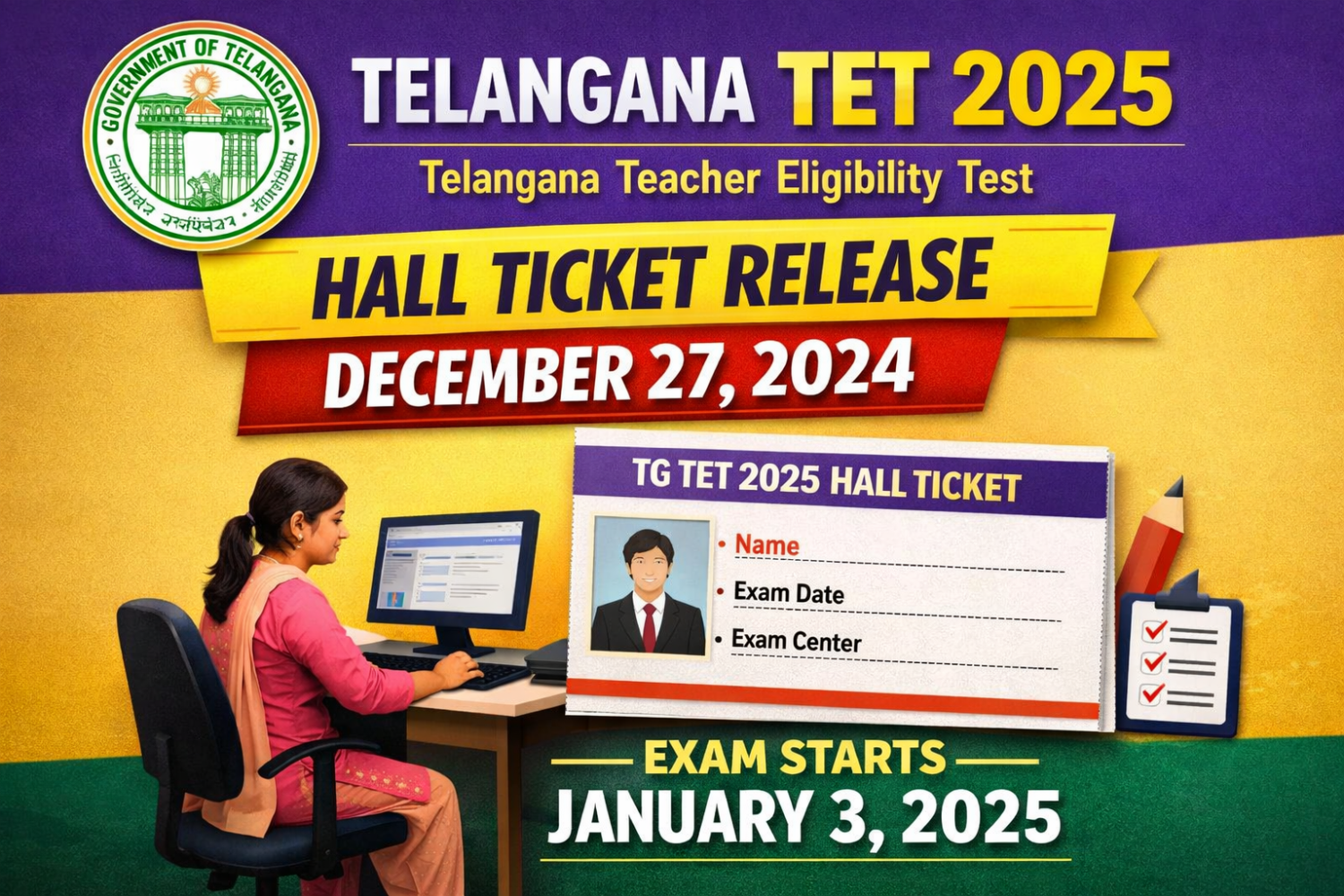UPSC ESE 2026: The Union Public Service Commission (UPSC) has released the Engineering Services Examination (ESE) 2026 Notification on 26th September 2025. Candidates from Civil, Mechanical, Electrical, and Electronics & Telecommunication engineering streams can apply for UPSC ESE 2026. This exam is one of the most prestigious competitive examinations in India, conducted to recruit engineers for Group A and Group B posts in various government departments.
UPSC ESE 2026 – Quick Highlights
| Feature | Details |
|---|---|
| Exam Name | UPSC Engineering Services Examination (ESE) 2026 |
| Conducting Body | Union Public Service Commission (UPSC) |
| Notification Release Date | 26th September 2025 |
| Total Vacancies | 474 (including 26 PwBD vacancies) |
| Application Mode | Online |
| Application Start Date | 26th September 2025 |
| Last Date to Apply | 16th October 2025 (till 6:00 PM) |
| Prelims Exam Date | 8th February 2026 |
| Mains Exam Date | To be announced |
| Admit Card Release | Last week of January 2026 |
| Official Website | www.upsc.gov.in |
UPSC ESE 2026 – Important Dates
- Notification Release Date: 26th September 2025
- Online Application Start Date: 26th September 2025
- Last Date to Apply Online: 16th October 2025 (till 6:00 PM)
- Preliminary Exam Date: 8th February 2026
- Admit Card Release: Last week of January 2026 (tentative)
UPSC ESE 2026 Notification & Application Links
| Resource | Link |
|---|---|
| Official UPSC ESE 2026 Notification PDF | Download Here |
| Apply Online for UPSC ESE 2026 | Click Here |
| UPSC Official Website | www.upsc.gov.in |
| Online Application Portal | www.upsconline.nic.in |
UPSC ESE 2026 Vacancies
The total number of vacancies announced for UPSC ESE 2026 is approximately 474, including 26 vacancies reserved for Persons with Benchmark Disabilities (PwBD). The vacancies are distributed across:
- Civil Engineering
- Mechanical Engineering
- Electrical Engineering
- Electronics & Telecommunication Engineering
UPSC ESE 2026 Eligibility Criteria
Nationality
Candidates must be either:
- Citizen of India, or
- Subject of Nepal/Bhutan, or
- Tibetan refugee (before 1st January 1962), or
- Person of Indian origin migrated from select countries.
Age Limit
- Minimum Age: 21 years
- Maximum Age: 30 years (as of 1st January 2026, born between 2nd January 1996 and 1st January 2005).
- Age relaxation applicable for SC/ST/OBC, PwBD, Ex-Servicemen, and Government servants as per rules.
Educational Qualification
- A degree in Engineering from a recognized University/Institution.
- Equivalent qualifications such as AMIE, IETE, or Aeronautical Society of India (with restrictions as per recent rulings).
UPSC ESE 2026 Application Fee
- General/OBC/EWS Male Candidates: ₹200
- Female/SC/ST/PwBD Candidates: Exempted from fee
Fee can be paid via SBI branches, Debit/Credit Card, UPI, or Internet Banking.
UPSC ESE 2026 Exam Pattern
The selection process is conducted in three stages:
- Preliminary Examination (Objective Type)
- Paper I: General Studies & Engineering Aptitude (200 marks)
- Paper II: Engineering Discipline Specific (300 marks)
- Main Examination (Conventional Type) – Two papers of 300 marks each (total 600 marks).
- Personality Test / Interview – 200 marks
Final selection will be based on marks secured in all three stages.
How to Apply for UPSC ESE 2026?
- Visit the official website: www.upsconline.nic.in
- Create an account and generate a Universal Registration Number (URN).
- Fill the Common Application Form (CAF) and upload necessary documents.
- Pay the application fee (if applicable).
- Submit the form and take a printout for reference.
Note: Candidates must carefully check details before submission. No changes will be allowed after submission.
UPSC ESE 2026 Preparation Tips
- Go through the previous years’ question papers.
- Focus on General Studies & Engineering Aptitude for Paper I.
- Revise core engineering subjects regularly.
- Practice answer writing for conventional papers.
- Stay updated with current affairs related to engineering & infrastructure.
Conclusion
The UPSC Engineering Services Examination 2026 is a golden opportunity for engineering graduates to join prestigious Group A and B services of the Government of India. Interested candidates must apply before 16th October 2025 and start preparing strategically for the exam.
Frequently Asked Questions (FAQs) – UPSC ESE 2026
Q1. What is the UPSC ESE 2026 Exam date?
The UPSC Engineering Services (Preliminary) Examination 2026 will be held on 8th February 2026.
Q2. How many vacancies are announced in UPSC ESE 2026?
UPSC has announced 474 vacancies for ESE 2026, including 26 vacancies reserved for PwBD candidates.
Q3. What is the last date to apply for UPSC ESE 2026?
The last date to submit the UPSC ESE 2026 application form is 16th October 2025 (till 6:00 PM).
Q4. What is the age limit for UPSC ESE 2026?
Candidates must be between 21 to 30 years as of 1st January 2026. Age relaxation is applicable for reserved categories as per UPSC rules.
Q5. What is the educational qualification required for UPSC ESE Notification 2026?
A candidate must hold a degree in Engineering from a recognized University/Institution or possess an equivalent qualification such as AMIE, IETE, etc., as specified in the notification.
Q6. How can I apply for UPSC ESE Notification 2026?
Candidates must apply online through the official website www.upsconline.nic.in by creating a Universal Registration Number (URN) and filling the Common Application Form (CAF).
Q7. What is the application fee for UPSC ESE Notification 2026?
- General/OBC/EWS Male Candidates: ₹200
- Female/SC/ST/PwBD Candidates: No Fee
Q8. What is the exam pattern of UPSC ESE Notification 2026?
The exam consists of three stages:
- Prelims (Objective Type) – 500 marks
- Mains (Conventional Papers) – 600 marks
- Interview/Personality Test – 200 marks
Q9. Where can I download the UPSC ESE Notification 2026 Admit Card?
The ESE 2026 Admit Card will be available on the UPSC official website www.upsc.gov.in in the last week of January 2026.
Q10. Is there negative marking in UPSC ESE Notification 2026?
Yes, negative marking will be applicable in the objective-type papers of the Preliminary Examination.





